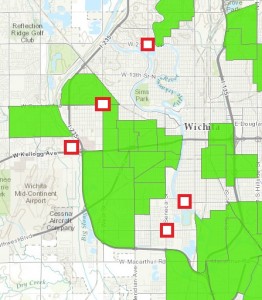Have you ever heard of a food desert?
The term refers to areas where access to fresh food is scarce.
I learned about food deserts in school and acknowledged that such places theoretically exist, where people (especially those without access to reliable transportation) have a hard time purchasing fresh foods – especially fresh fruits and vegetables.
I thought of Lincoln’s downtown, where there are few grocery stores and where many of the residents (okay, my context is almost entirely based on being a student and employee at the University of Nebraska – Lincoln) don’t have cars.
Surprisingly, when I looked at the USDAs data (check out your location here), I discover that Lincoln’s downtown is NOT a food dessert, but where I grew up IS.
This despite the fact that I spent my childhood and certainly my teenage years walking or riding my bicycle to the Walmart Supercenter or Super Saver (the most amazing grocery store EVER) that were less than 2 miles away. Huh.
Then again, the criterion for limited access in urban areas is that a large (>33%) proportion of the population is not within 1 mile of a grocery store. So I qualified. I hoofed it 1.5 and 1.8 miles respectively to Walmart or SuperSaver.
Oh, and I just forgot, there were a couple of HyVees too. One at 1.4 miles and one at 1.6 miles or so. Yep, I guess I was in a food desert. Strangely enough, I felt like I had the best access to food I’ve ever experienced in my life. Imagine that.

I live and work towards the center of this map, right next to or on the green “food deserts”. The red squares are the supermarket complexes nearby.
Now that I’m in Wichita, I’m one street away from a food dessert.
I have one grocery store complex (Walmart Neighborhood Marketplace and Dillons) at 2 miles (an easy enough biking distance); another complex (Walmart Neighborhood Marketplace, Dillons, and ALDI) at 3.2 miles (for me, still a decent biking distance); and a third with all three stores at 3.9 miles. I struggle to come up with the store that’s within 1 mile of the majority of my census tract – but we’re still definitely not deprived.
So, I’m almost a desert dweller, officially. In reality, I’m not so sure.

